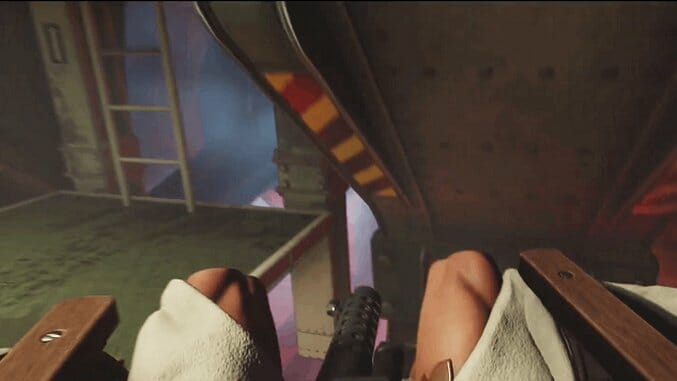Wolfenstein II‘s Wheelchair Segment Has a Surprising Inspiration

There are a lot of reasons to look forward to Wolfenstein II. Like the last one, it promises to be an immaculately designed shooter with tight, intuitive level design and an endless opportunity to kill Nazis. But also notable is an early showcase of the developer’s attention to detail as seen in the game’s opening sequence. As I wrote during PAX West 2017, in it, the protagonist B.J. Blazkowicz, captive aboard a German Nazi naval vessel, is confined to a wheelchair after a serious injury. The following gameplay section sees Blazkowicz navigating the ship’s maze like machinations from the confines of the apparatus, encountering various obstacles and finding strategic solutions around them along the way.
Curious about the insight lent to this scene, I reached out to Bethesda to get some details on how it was written. MachineGames’ first person lead designer Jakob Ericsson responded, revealing a surprising source: skateboarding videos. As he told me via email, “Since BJ was supposed to be all banged up in Wolfenstein II the writers had him using Caroline’s motorized wheelchair in the first level. Prior, during the development of [2014’s Wolfenstein reboot prequel] The Old Blood, I had watched some videos of people using their wheelchairs in skateparks and got really impressed with what is possible to do with one. I then came up with a design for using a wheelchair in a first person shooter. I[t] later turned out that design would fit perfectly with Wolfenstein II.”
The aim of the segment was to make the wheelchair movement intuitive, while giving weight to the player as they fluidly move through the map. The result is surprisingly thoughtful, prompting me to ask if an actual disabled person lent their insight during the scene’s development. Says Ericsson, “We considered consulting a disable[d] person about how to control the wheelchair but as the segment is such a short part of the game we ended up using videos for reference instead. We also have a wheelchair at the office’s mo-cap room that I spent some time in for research. One of the things I learned from that is that it is very hard to aim a weapon while moving in a wheelchair.”